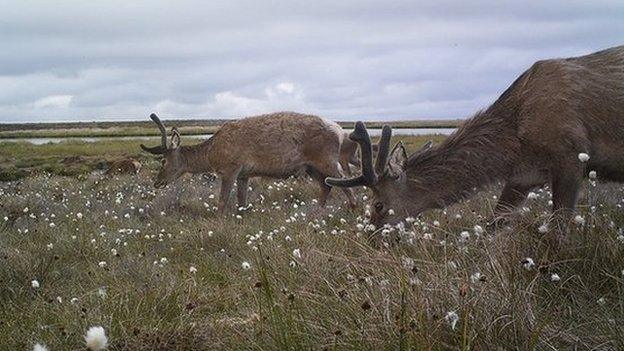Amazon peatlands are 'most carbon-dense ecosystem'
- Published
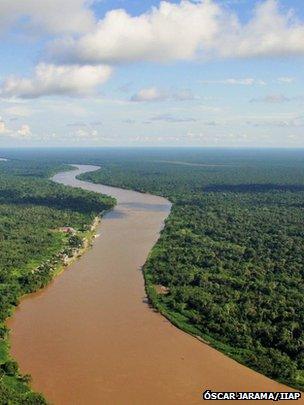
In Amazonia's most carbon-dense ecosystems, an estimate 90% is stored underground as peat
The most dense store of carbon in Amazonia is not above ground in trees but below ground in peatlands, a study has calculated.
An international team of researchers said their work, which uses satellite data and field measurements, provides the "most accurate estimates to date".
Protecting these landscapes is vital if efforts to curb climate change are to be successful, they added.
The findings appear in the journal Environmental Research Letters, external.
Writing in the paper, the scientists observed: "This investigation provides the most accurate estimates to date of the carbon stock of an area that is the largest peatland complex in the Neotropics."
They said it also confirmed "the status of the [Pastaza-Marañón foreland basin in north-west Peru] as the most carbon-dense landscape in Amanozia".
"We expected to find these peatlands but what was more of surprise was how extensive they were, and how much this relatively small area contributed to Peru's carbon stock," explained co-author Freddie Draper from the University of Leeds.
The 120,000 sq km basin accounts for just about 3% of the Peruvian Amazon, yet it stores almost 50% of its carbon stock, which equates to about three billion tonnes.
Deep peat
Mr Draper told BBC News that the team used a new approach to produce their figures: "We used quite a novel method, combining a lot of field data - for about 24 months, we measured how deep the peat was, how dense it was and how much of it was carbon.
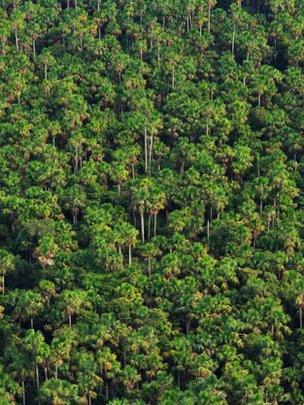
Peru's peatlands need to be a conservation and research priority, the authors suggest
"That measured how much carbon was in the ground, and then we estimated how much carbon was in the trees.
"Probably the most novel part, because the study covered such a large area, we used different satellite products (radar and images) to identify where these peatlands were."
The team said that the basin remains "almost entirely intact", but threats are increasing.
"Maintaining intact peatlands is crucial for them to continue to act as a carbon sink by continuing to form peat and contribute fully to regional habitat and species diversity," explained co-author Katy Roucoux from the University of St Andrews.
Dr Roucoux told BBC News that scientists are still learning about the contribution these landscapes make to the global carbon cycle.
"An important issue is the extent to which the peatland ecosystems are continuing to lock up and store carbon as peat today. It certainly looks as though they are as the environmental conditions are right, ie water-logged."
She added: "Our ongoing work in this area also concerns the processes of peat accumulation: what controls the species make up of the peatland ecosystems and under what vegetational, environmental and climatic conditions peat forms, in order to identify their sensitivity to future environmental changes resulting from climatic and/or land use change."
The findings have been published shortly after the conclusion of international climate negotiations in Peru's capital city, Lima.
The talks - scheduled to concluded on Friday - continued into the weekend, as delegates struggled to reach agreement over a framework for setting national carbon budget pledges to be submitted to the next UN climate summit in Paris next year.
"Following the recently agreed Lima Call for Climate Action at COP20 and in the run-up to COP21 in Paris next year, there is a strong onus on countries to produce ambitious plans to reduce carbon emissions," explained fellow co-author Tim Baker from the University of Leeds.
"For a carbon-rich country such as Peru, understanding where carbon is stored and developing policies to protect those ecosystems is an important part of this process."
The paper's findings, Dr Baker added, suggest that the peatlands must become a conservation and research priority.
"Undoubtedly more work needs to be done to protect these areas effectively, as the major national park in the region - Pacaya Samiria - does not cover the most carbon dense vegetation, nor the broad diversity of forest types in this area."
- Published22 May 2014
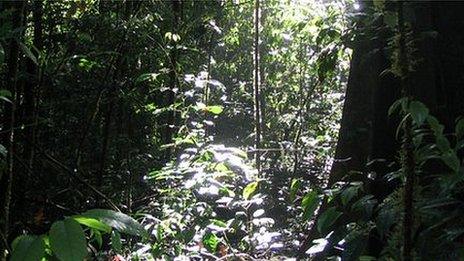
- Published16 November 2011
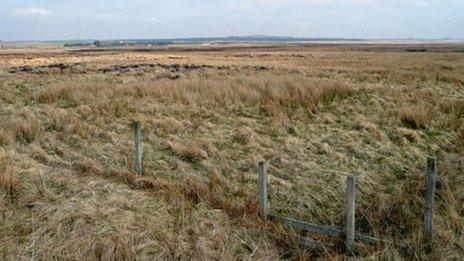
- Published4 March 2014
